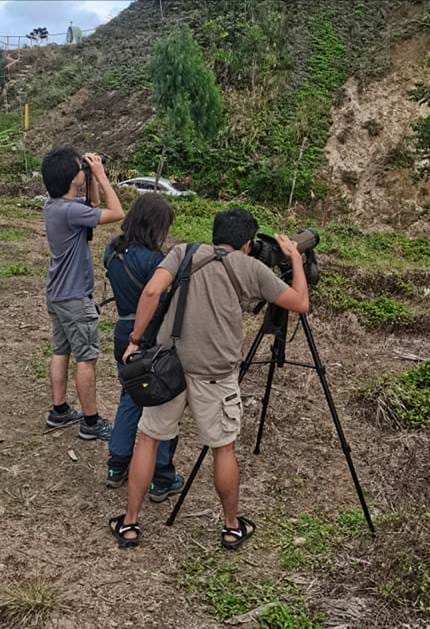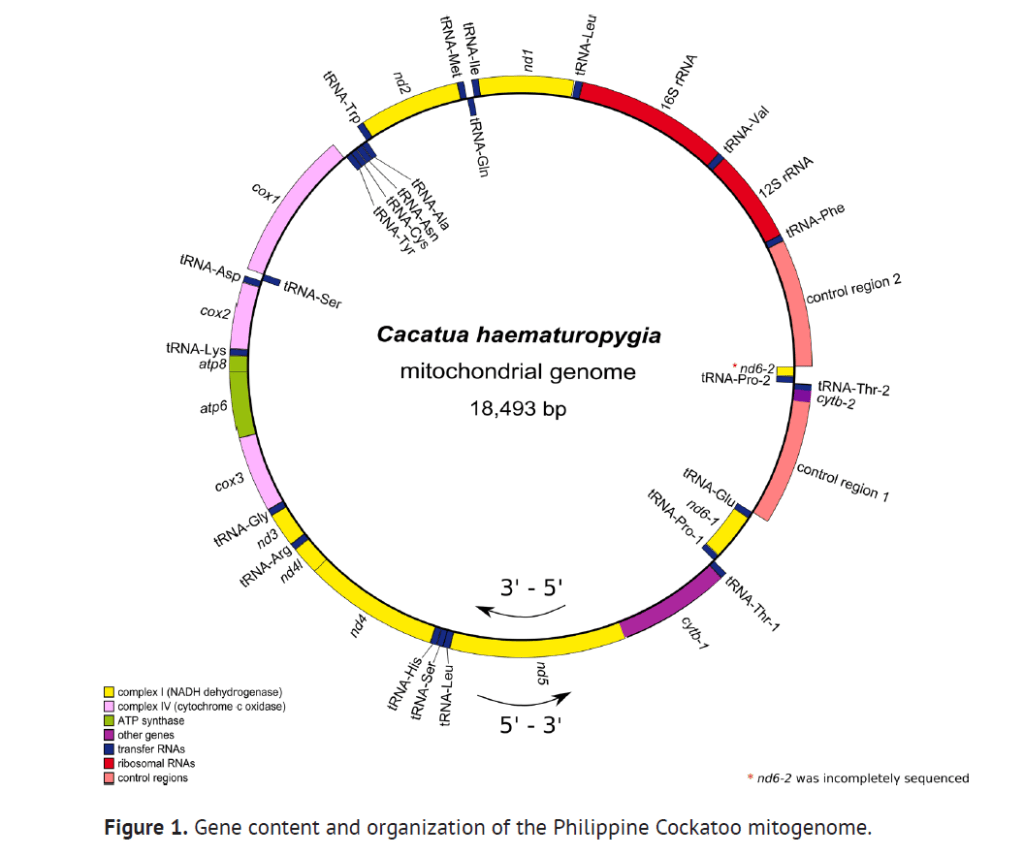By Gabbi Reyes-Banaria

A forest cannot exist without a tree. A community would not be without the individual.
Everything in this world is made up of smaller components with a special purpose and function that creates the ‘whole’.
And while some of us are in pursuit of the finer things in life, there are those who are bold enough to venture into a world we do not easily see and study life through the smaller and finer details.
Meet Gerard Clinton Que, a scientist and research staff at the Institute of Biology, University of the Philippines (UP) Diliman. He has participated in compelling research and co-written papers and articles, one of which is entitled Phylogenetic Placement of the Philippine Cockatoo Cacatua haematuropygia (P.L.S. Muller 1776) based on the Mitochondrial Genome. Apart from birding, he enjoys reading and biking.
Birder DNA
G: When did you start birding and how? Tell us your story.
GCQ: I started as an undergraduate student, when I took Bio 160 under Dr. Carmela Española. She took my class birdwatching around UP Diliman. Later on, while taking my graduate studies, she also took us birding in Baggao, Cagayan. I also joined birdwatching trips around UP Diliman organized by Jelaine Gan for The UP Wild, and she was the one to suggest joining WBCP.
G: What was your experience like as a newbie back then? How did you feel?
GCQ: Like I wasn’t qualified to be a birdwatcher! I had a lot to learn. Most of my birding was done around UP Diliman, so almost every bird I saw when I joined trips organized by other birders was new. I had to learn how to ID so many species! Things have improved since then, but I still have trouble spotting birds in dense vegetation.
What a unique take on being new in the club! No one starts out as an expert, and it takes a lot of humility for one to be open to learning. Much like researchers like Gerard, it’s the “not knowing” that drives us to dig deeper.
Gerard’s spark bird was the Collared Kingfisher which he spotted close to the Institute of Mathematics in UP Diliman. To him, it was “probably the most colorful bird” he had seen at the time. He officially joined the club in 2022 after signing up for a guided trip led by Mike Lu at Ninoy Aquino Parks and Wildlife Center.
G: What was your most challenging experience as a birder?
GCQ: There’s no single experience, but every time I see a bird that no else saw and then get asked to point it out, it’s a challenge. I need practice in giving directions, while maintaining my view of the target bird.

Photo by Leo Barcenas
G: What was your most rewarding experience?
GCQ: Finding a Terek sandpiper in Tanza mudflats, Navotas. It was the first time I managed to both find and ID a new bird (a lifer) on my own (though the scope I was using wasn’t mine hehe. Thanks, Gwen!).
Speaking of rewarding experiences, Gerard also hopes to one day see a wild Philippine eagle in Luzon—his life’s birdwatching goal. Other birds he wishes to see are the Luzon bleeding-heart and Philippine trogon. Who knows? Maybe this is your year, Gerard.
G: Birding is great because…
GCQ: It allows me to travel to places I otherwise would never visit.
Among the places he has visited so far, he names Bongabon Road, Aurora Memorial National Park as his favorite place to bird. “Not just for the birds, the place itself is beautiful! The mountains are relatively pristine and I love watching the fog lift during sunrise.” he shares.

Photo credits to Ninoy Silvestre
Life In All Sizes
G: When did you know you wanted to be a scientist?
GCQ: Working with DNA and wildlife samples as an undergraduate student was probably what decided me. Mr. Emerson Sy had turned over several frog tissue samples to the Institute of Biology and using DNA extracted from them I was able to identify not only the species but to trace their origins as an introduced species from Hawai’i. In addition, I already had an interest in wildlife gained from playing outdoors as a child and catching frogs and insects and bringing them home (In hindsight, I probably should not have been catching wildlife hehe).
G: In what way do molecular biologists shape the future of conservation?
GCQ: DNA extracted from organisms can prove to be an extremely useful tool for biology. It can be used for species discovery, monitoring genetic diversity of populations, and monitoring of animal diseases such as Psittacine Beak and Feather Disease.
G: What inspired you to focus on Katalas for some of your research papers?
GCQ: This was actually an idea of my adviser, Dr. Ian Fontanilla. His lab, the DNA Barcoding Laboratory, already had an ongoing collaboration with the Katala Foundation to use DNA to check for viruses in monitored Katala populations in Palawan. The Katala Foundation would send blood samples to his lab, and these could also be used for population studies of the Katala, such as to check for genetic diversity and signs of inbreeding.
G: What was your biggest realization from all your Katala research work?
GCQ: The separate populations of the Katala in Palawan are all closely related and may be thought of as one fragmented population. They are already inbred, and ideally should be augmented by genetically different individuals from other Katala populations, if such a thing can be managed.

Above is an image representing what Gerard considers his favorite work—the sequencing and assembly of the Katala’s mitochondrial genome (https://journals.upd.edu.ph/index.php/sciencediliman).
“We’re all taught in elementary school that the mitochondria are the powerhouses of our cells. What’s often not mentioned is that they contain their own DNA, separate from those stored in the cell nucleus, and this DNA is inherited matrilineally, or passed on from mother to child (mitochondrial DNA from males is typically not inherited). This piece of DNA has many more copies than nuclear DNA in each cell, so it is far easier to amplify and study. Most of the attention generated by my master’s thesis came from the genetic diversity studies of the Katala, but that would not have been possible without this piece of DNA, and assembling it has allowed me to study how the Katala is related to other Corellas (cockatoos of the subgenus Licmetis, genus Cacatua) in Indonesia and Australia.”
What a privilege it is to be in a community that consists of brilliant minds. How amazing is it to keep learning that the complexity of something as small as DNA is larger-than-life?
G: Besides Katalas, what other animals do you think people should be watching closely/focusing on?
GCQ: Oh, there are a lot! The Philippines has a lot of threatened endemic and native taxa, and only the most charismatic ones like the Philippine Eagle and Tamaraw are given attention. In particular, I’d ask people to focus on wild animals that are commonly kept as pets, such as the Colasisi, the Blue Naped Parrot, and the Palawan Hill Mynah. These are commonly poached from the wild and I hope this practice can someday be stopped.
Finally, Gerard helps us start 2024 right by sharing a new year’s resolution and reminder for all:
G: Since it is a new year, what practices should people start or stop doing to help in conservation?
GCQ: Stop buying wild animals! The wildlife trade is one of the greatest detriments to Philippine conservation and I wish people would refrain from keeping wildlife as pets or hunting them for sport or even food.
Thank you, Gerard, for your time and valuable contributions to science! We look forward to more of your discoveries.
